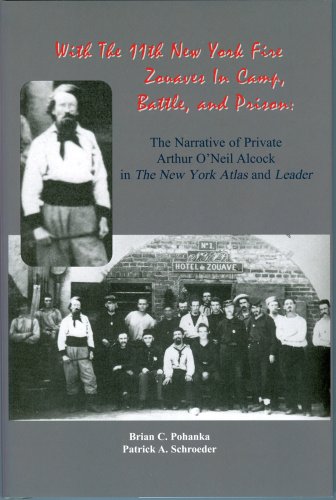With the 11th New York Fire Zouaves In Camp, Battle, and Prison: The Narrative of Private Arthur O Neil Alcock in The New York Atlas and Leader - Hardcover

"synopsis" may belong to another edition of this title.
"About this title" may belong to another edition of this title.
- PublisherSchroeder Publications
- Publication date2011
- ISBN 10 1889246468
- ISBN 13 9781889246468
- BindingHardcover
- Edition number1
- Number of pages232
- EditorPatrick A. Schroeder, Brian C. Pohanka
Buy New
Learn more about this copy
Shipping:
US$ 6.95
Within U.S.A.
Top Search Results from the AbeBooks Marketplace
With the 11th New York Fire Zouaves In Camp, Battle, and Prison: The Narrative of Private Arthur O Neil Alcock in The New York Atlas and Leader ( signed )
Book Description Hardcover. Condition: New. Dust Jacket Condition: New. Unknowen (illustrator). 1st Edition. 1st. Edition , Hardcover in the dust jacket , 232 page book with black & white illustrations . This copy is signed by Patrick A. Schroeder on the title page .with REMEMBER ELLSWORTH . Condition : New . Size: 8vo - over 7¾ - 9¾" tall. Signed by Author(s). Book. Seller Inventory # 101520-S
With the 11th New York Fire Zouaves In Camp, Battle, and Prison: The Narrative of Private Arthur O Neil Alcock in The New York Atlas and Leader
Book Description Hardcover. Condition: new. New Copy. Customer Service Guaranteed. Seller Inventory # think1889246468

